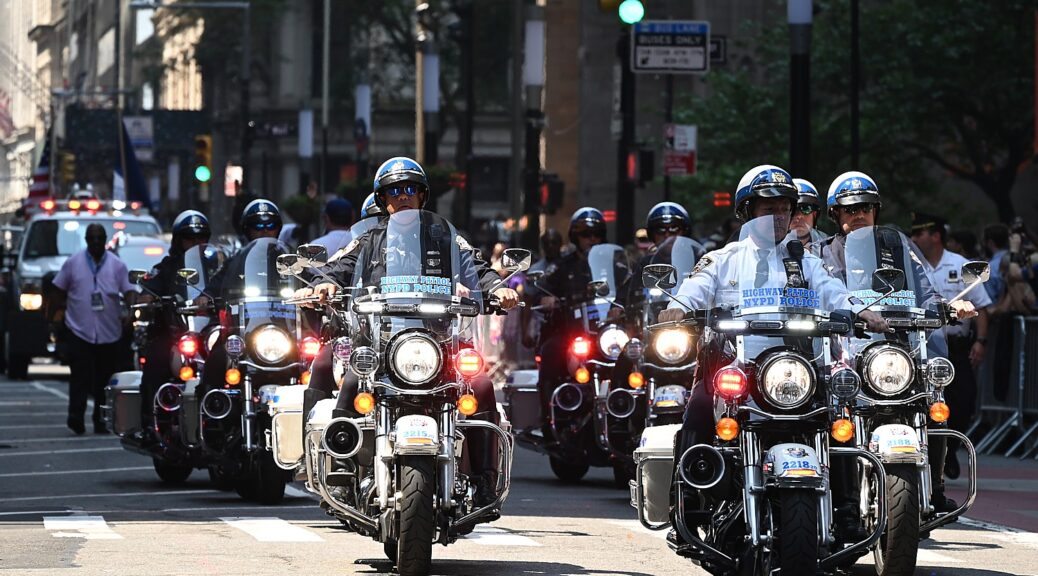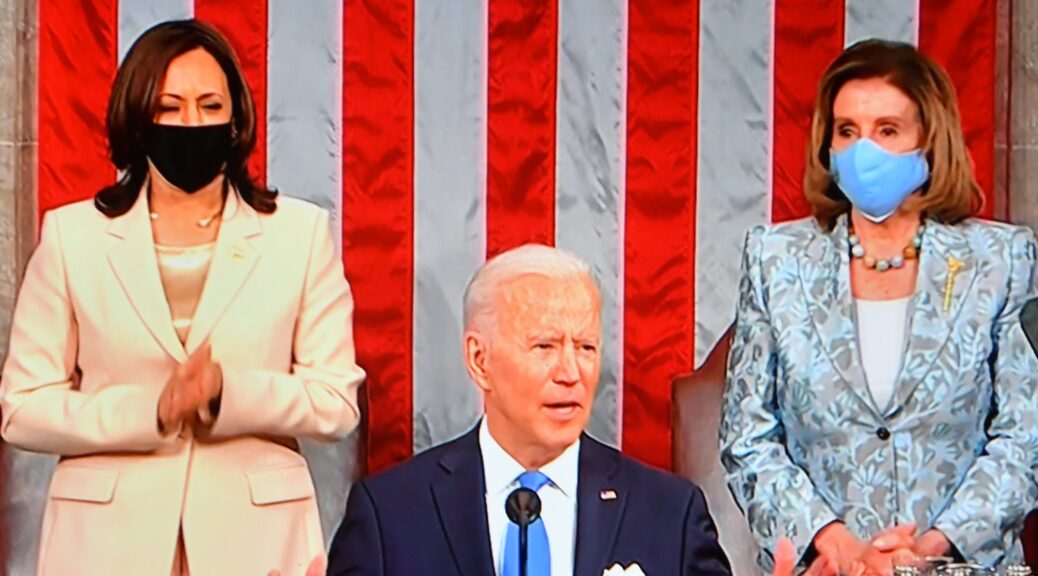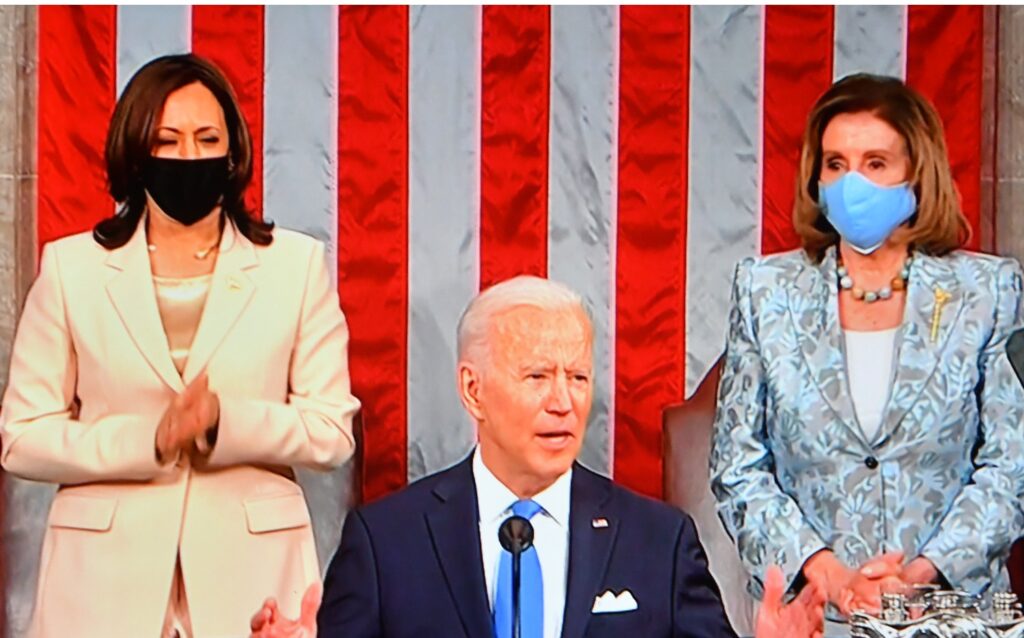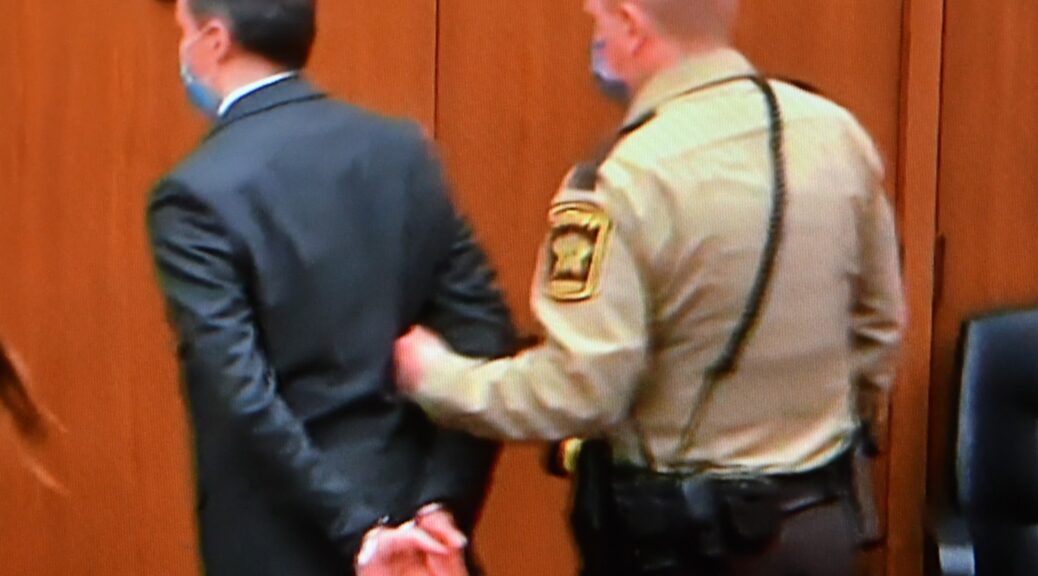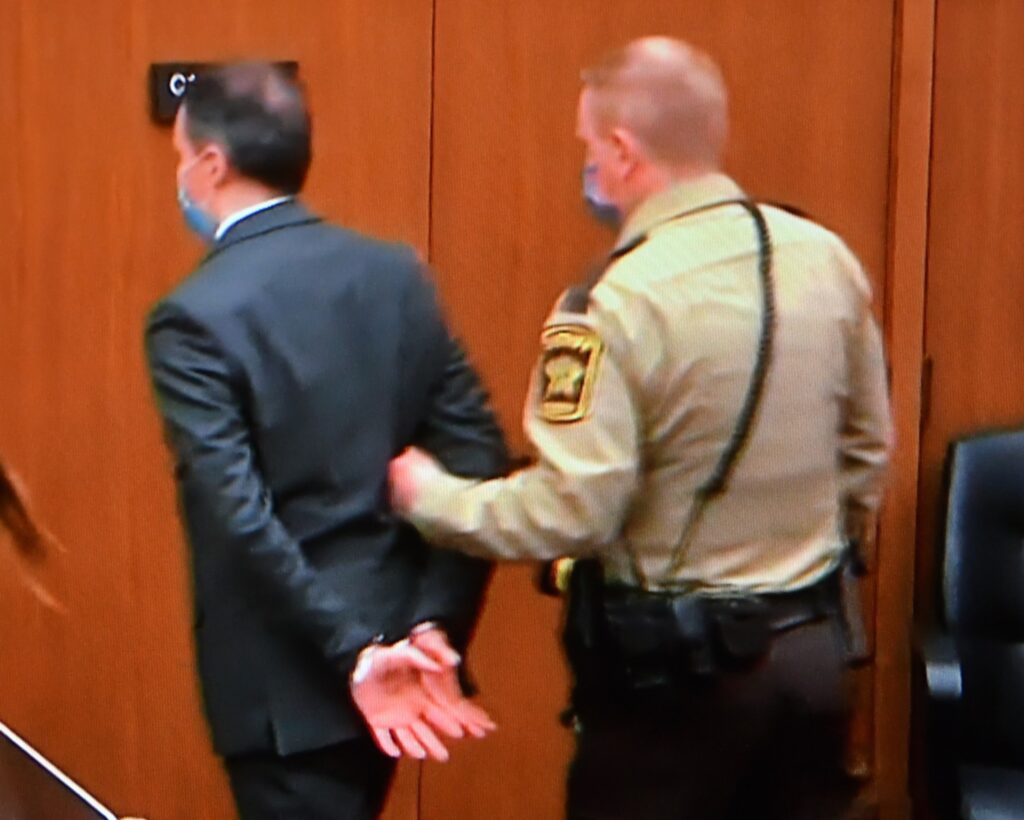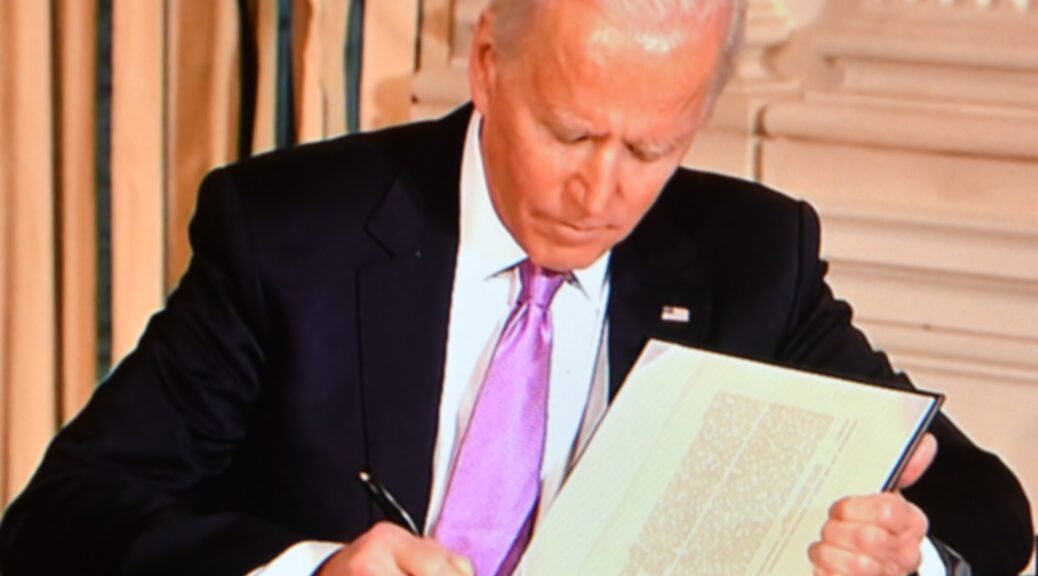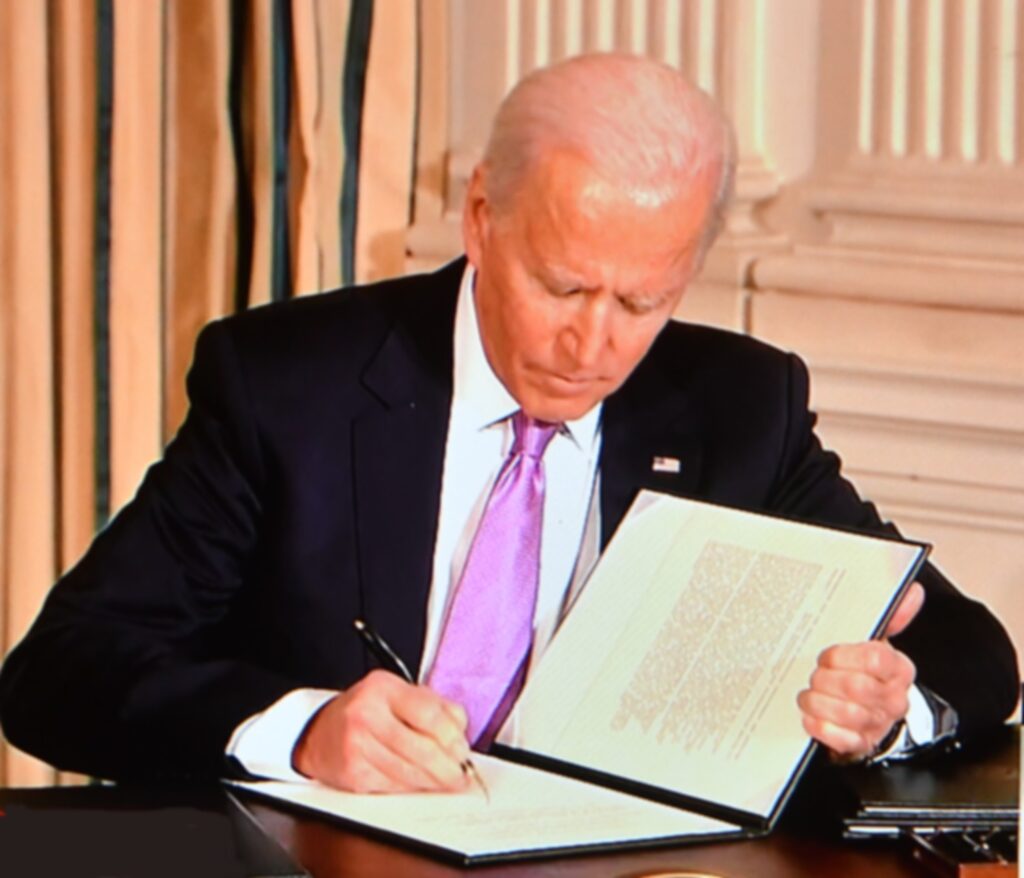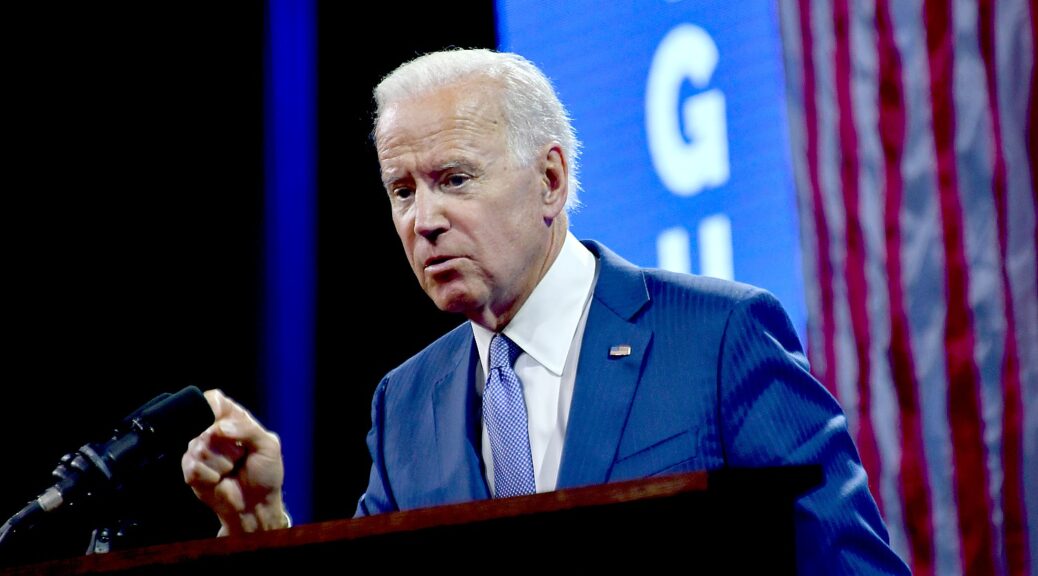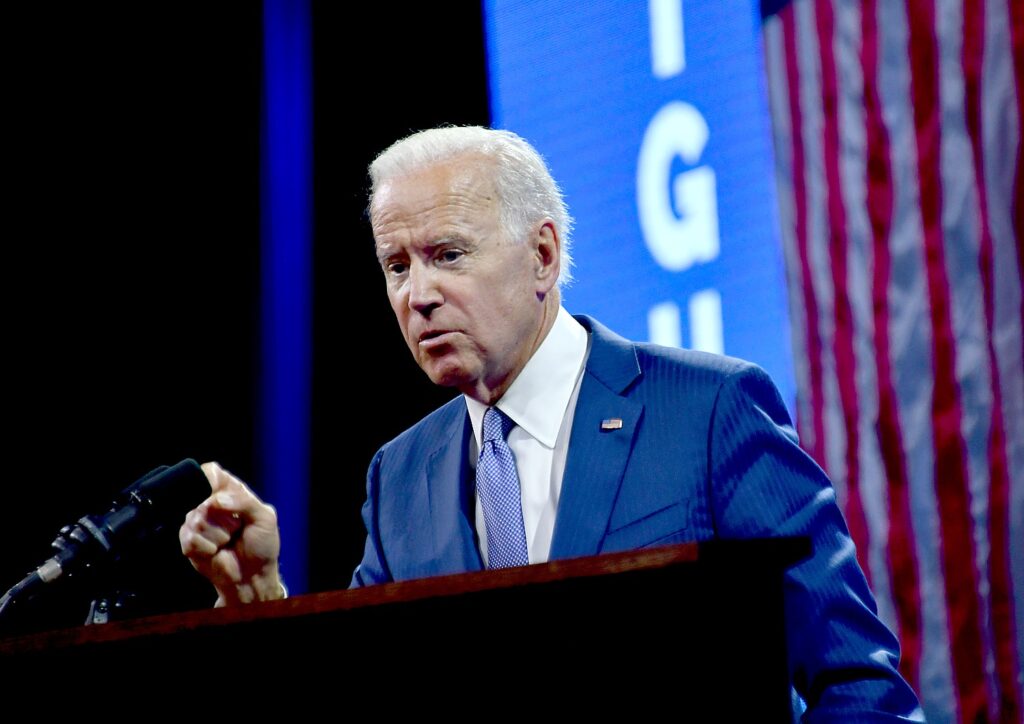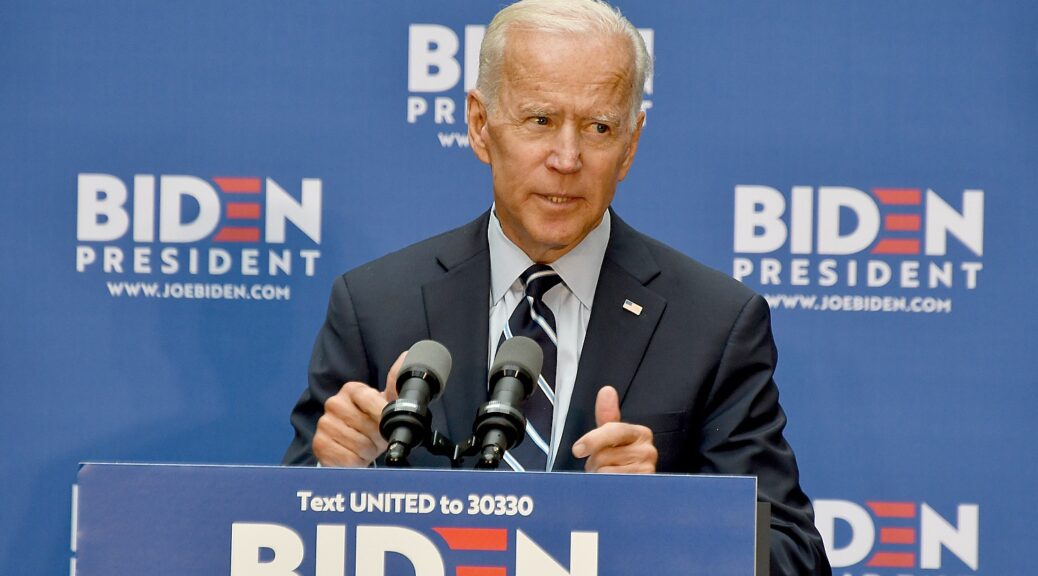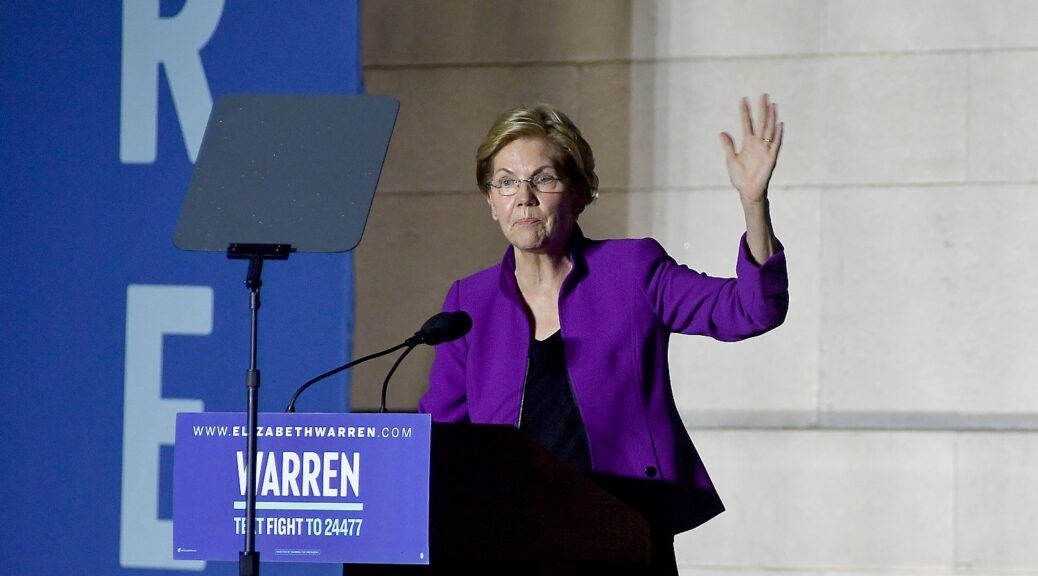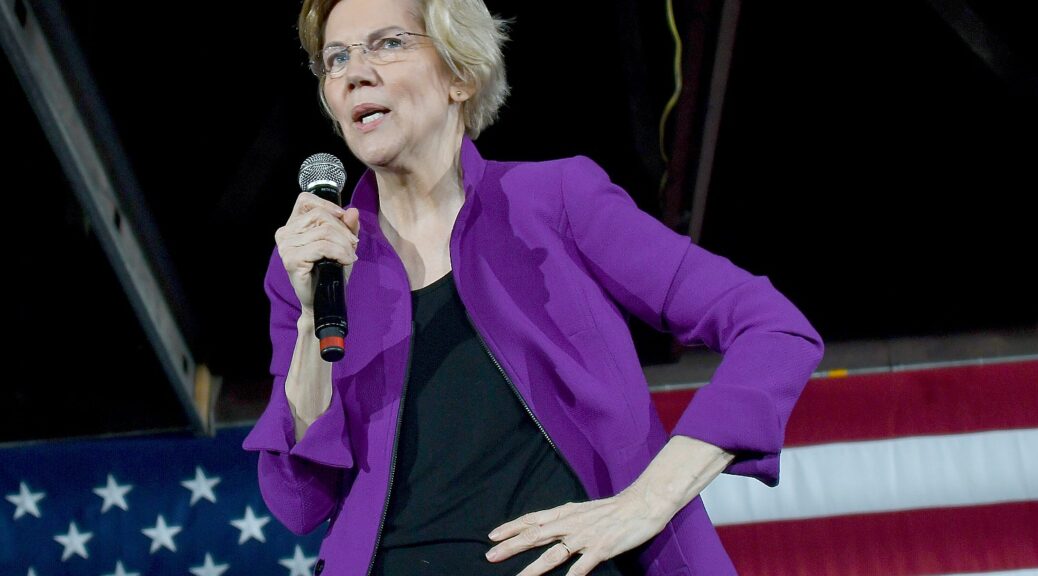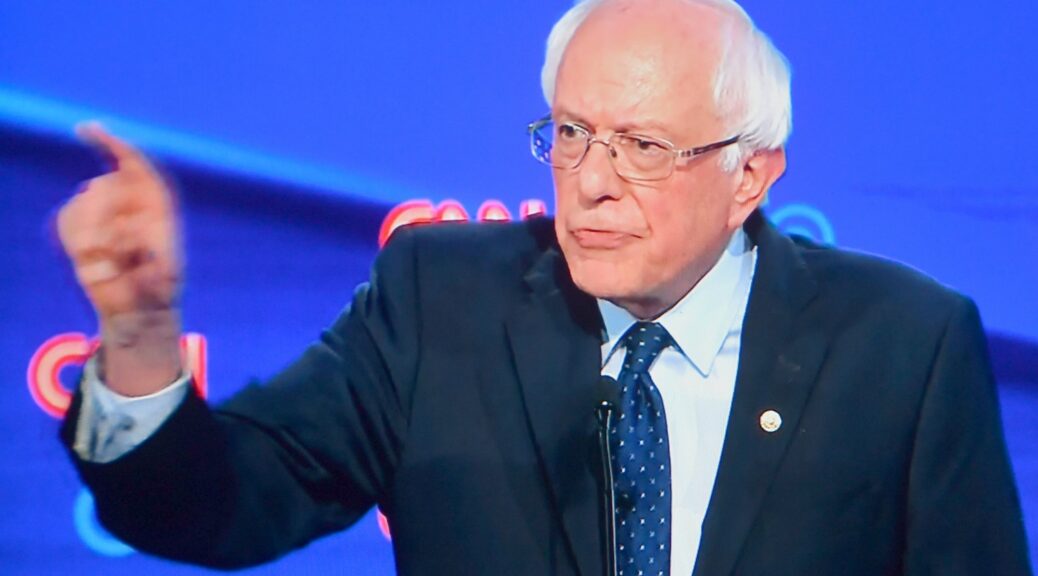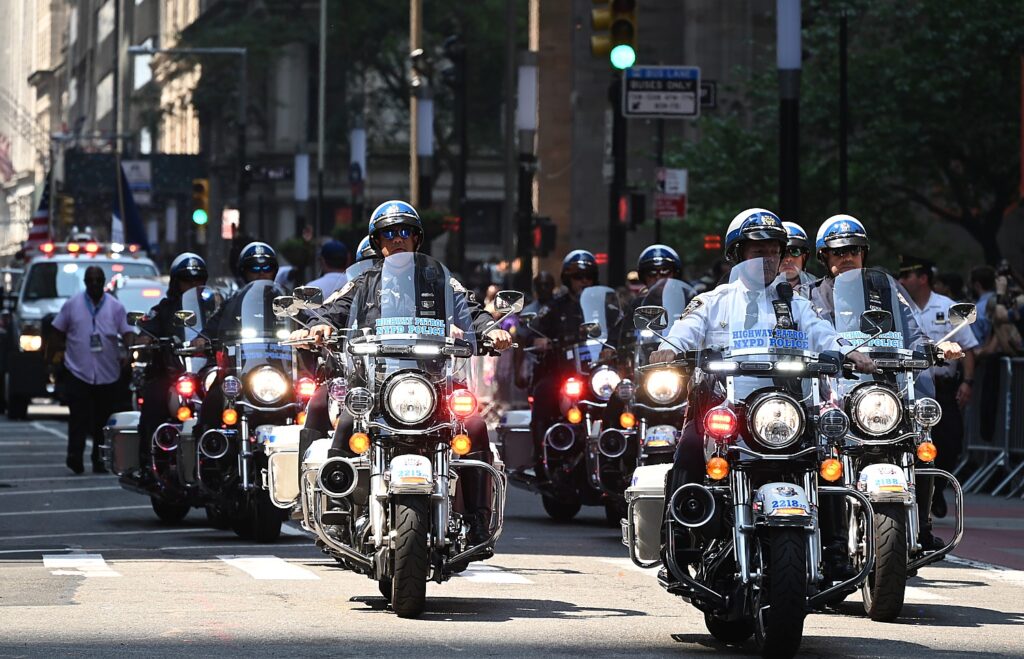
With Republicans running campaigns based on increased crime rates and falsely charging “socialist liberal communist Democrats” with trying to “defund police” and supporting criminal justice, police reform and cashless bail, it bears noting that crime rates are rising in places ruled by Republicans as well as Democrats. (Nassau County, Long Island was America’s safest county of its size under Democrat County Executive Laura Curran; crime rates have risen 34 percent so far in 2022 under Republican Bruce Blakeman.)
Moreover, increase in crime rates reflects record levels of gun violence (a record 45,000 gun deaths in 2021, a rate that has hit records every year since Trump took over; per capita murder rates are 40% higher in states won by Trump than in those won by Joe Biden) as well as hate crimes and political violence that have accelerated with the rise of Trump and Trumpism bringing White Christo Fascism out of the shadows and into the mainstream. Trump basically gave permission for hate and political violence.
So, in addition to making it easier to buy assault weapons and refusing to raise the minimum age to 21, Texas Governor Greg Abbott’s response to the Uvalde school massacre was to send DNA kits to schools that parents can use to identify their children’s bodies AFTER they’ve been murdered rather than pass gun safety laws to proactively protect their lives. And while the Gun Lobby loves to dismiss the easy access to guns including weapons of war as a factor in America’s gun violence epidemic, and instead blame mental illness, Republicans at the federal and at state level (Texas) have voted against funding mental health services in schools and communities.
The reality is that whereas Democrats have supported law enforcement, Republicans have been the ones to cut funding: Trump wanted to rescind aid to police in sanctuary cities and the Republican Sedition Caucus in Congress is calling for ending funding to the FBI. While Republicans make a pretense of being the party of “law and order, – and work to overrule , overturn police reform and cashless bail , and repeal gun safety legislation – two words make clear the hypocrisy: January Sixth. In point of fact, President Biden released his Safer America Plan this summer. The White House provided this fact sheet – Karen Rubin/news-photos-features.com
President Biden knows what works to make our communities safer: investing in community policing and crime prevention. We need to fund police who walk the beat, know the neighborhood, are accountable to those they are sworn to serve, and build community trust and safety. We need to invest in mental health and substance use treatment services, crisis responders, and social workers to reduce the burden on police officers, connect people with community resources, and prevent violent crime. We need to expand community violence interventions – led by trusted messengers breaking the cycle of violence and trauma. We need to enforce our commonsense gun laws, require background checks for all gun sales in order to keep firearms out of the hands of felons and domestic abusers, and ban assault weapons and high-capacity magazines – weapons of war that have no place in our communities.
President Biden has taken action to make our communities safer during his first 18 months in office. He has funded the police and issued an Executive Order to improve police accountability. President Biden has taken more executive action to tackle gun violence than any other president at this point in their Administration, including by reining in the proliferation of ghost guns and cracking down on gun traffickers and rogue gun dealers. President Biden is the first president in nearly 30 years to bring together Members of Congress from both parties to take action on gun violence, signing the Bipartisan Safer Communities Act. The President also secured Senate confirmation of career prosecutor Steve Dettelbach to serve as Director of the Bureau of Alcohol, Tobacco, Firearms and Explosives (ATF), empowering this law enforcement agency with its first confirmed leader since 2015. And, the President has made unprecedented investments in community-led crime prevention and intervention.
The President believes we can and must do more to reduce crime and save lives. On July 21, President Biden announced his Safer America Plan to build on the progress he has made to reduce gun violence.
Today, the President is providing greater details regarding the Safer America Plan. President Biden’s fiscal year 2023 budget requests a fully paid-for new investment of approximately $35 billion to support law enforcement and crime prevention – in addition to the President’s $2 billion discretionary request for these same programs. The Safer America Plan details how this $37 billion will be used to save lives and make communities safer.
Specifically, the Plan:
- Funds the police and promotes effective prosecution of crimes affecting families today, including by funding 100,000 additional police officers who will be recruited, trained, hired, and supervised consistent with the standards in the President’s Executive Order to advance effective, accountable community policing in order to enhance trust and public safety;
- Invests in crime prevention and a fairer criminal justice system, including by investing $20 billion in services that address the causes of crime and reduce the burdens on police so they can focus on violent crime, and by incentivizing the reform of laws that increase incarceration without redressing public safety;
- Takes additional commonsense steps on guns to keep dangerous firearms out of dangerous hands, including by calling on Congress to require background checks for all gun sales and ban assault weapons and high-capacity magazines.
1. Fund the Police and Promote Effective Prosecution of Crimes Affecting Families Today
Fund the Police with the Resources They Need For Effective, Accountable Community Policing
As President Biden said during his State of the Union Address, “We should all agree the answer is not to defund the police. It’s to fund the police. Fund them with the resources and training they need to protect our communities.” We cannot abandon our streets, and we should not have to choose between safety, public trust, and equal justice. Instead, we can protect our communities and restore trust by investing in accountable, equitable, evidence-based, constitutional policing and other law enforcement practices. In May 2022 President Biden signed an Executive Order on Advancing Effective, Accountable Policing and Criminal Justice Practices to Enhance Public Trust and Public Safety (Executive Order 14074), which advances effective, accountable community policing in order to enhance trust and public safety. Through the Executive Order, the President mandated policing reforms and best practices for federal law enforcement officials. President Biden’s Safer America Plan would not only increase funding for police across the country—it would also extend the Executive Order’s reforms and best practices to state and local law enforcement. The Plan will:
Put 100,000 additional officers for effective accountable, community policing on our streets. The Safer America Plan will provide the investment necessary to recruit, train, support, and manage 100,000 additional police officers for effective, accountable community policing over the next five years. Specifically, the Plan calls on Congress to appropriate $10.877 billion in mandatory funding over five years for the COPS Hiring Program, which, combined with the President’s discretionary funding proposal for this program, will fully fund this goal with $12.817 billion in total. These funds will be used to get officers out of their stations and squad cars and into the community, walking the beat on foot patrols that have been shown to enhance officer morale, improve community relations, and have a deterrent effect on crime.
These new funds will incentivize state and local police departments to undertake commonsense reforms the President required of federal law enforcement agencies in May in Executive Order 14074. These reforms include banning chokeholds and carotid holds except where deadly force is authorized; training officers in de-escalation tactics to prevent the unnecessary use of force; restricting the use of no-knock warrants; requiring that body cameras be activated when conducting arrests and searches and when on patrol; submitting data to the new National Law Enforcement Accountability Database that the Justice Department will create; and undertaking other consensus reforms. We will also prioritize funding for officers that are representative of the communities they are sworn to serve (including recruits who live in or are from the community), and we will require that officers hired with federal funds be properly screened, including to ensure that they do not have a history of termination or resignation under investigation for serious misconduct from another police department.
Support state, local, Tribal, and territorial officers with the high-quality training the President has already mandated at the federal level by the Executive Order. Training varies widely across states and across law enforcement agencies. The Plan will fund training that enhances accountability, transparency, and the well-being of state and local officers and the communities they are sworn to serve. That includes an infusion of resources to enhance evidence-based training of law enforcement on topics including crime control and deterrence tactics, community engagement, use of force, interacting with people with disabilities, responding to persons in mental health crisis and to domestic violence calls, responding to First Amendment protected public protest activity, and more. The Plan will also fund the purchase and operation of body-worn cameras. The Plan calls on Congress to appropriate $1 billion over five years for these purposes. These funds will also be used to incentivize state and local law enforcement agencies to implement reforms such as those discussed above that the President required of federal law enforcement agencies in Executive Order 14074.
Recruit and retain police officers who demonstrate a commitment to honorably serving and protecting. We ask police to put their lives on the line to keep us and our loved ones safe. Front-line officers and chiefs around the country have made clear that we need to do more to recruit and retain officers who honorably serve as guardians of their communities. We also need to support agencies in developing flexible employment opportunities so that the profession meets the needs of a 21st century workforce and can continue to attract the best candidates at the state and local level who will meet and exceed the effective, accountable community policing standards mandated for federal law enforcement in the Executive Order. To attract and retain this high-quality workforce, President Biden’s Safer America Plan will fund bonuses for retention; provide student loan repayment, tuition reimbursement, and higher education grant programs to incentivize service-minded candidates, including women and individuals from underrepresented communities, to become officers; support pilot programs to explore more flexibility in scheduling and work arrangements; and expand mental health and wellness care for our police officers. The Plan calls on Congress to appropriate $750 million over five years for these purposes, and require that grant recipients report to the Attorney General and make public any use of funds to pay bonuses.
Ensure that new resources for law enforcement reach not only our biggest cities but also our small cities and towns. Smaller agencies often lack the personnel and resources to stay abreast of the latest evidence-based practices in policing, and lack internal capacity to identify and access grant and high-quality training opportunities. The Safer America Plan will set aside a minimum of $300 million per year of the funding described above to exclusively support small law enforcement agencies.
Clear Court Backlogs and Solve Murders So We Can Take Shooters and Other Violent Criminals Off the Streets
A small number of individuals are responsible for a disproportionate share of homicides and gun violence in our cities. The federal government will help state and local law enforcement in cities across the country take these criminals off our streets – and keep them off our streets. That’s why the President’s Fiscal Year 2023 budget proposal includes funding to ensure that federal law enforcement can show up and support state and local law enforcement. For example, the President’s budget request includes $2.8 billion for the U.S. Attorney’s Offices, an increase of 15% over FY22 enacted. This funding will increase the number of attorneys in these offices by 10%, increasing the federal government’s capacity to ramp up prosecutions of people who commit shootings and other violent crimes. The President’s budget also includes funding to hire 195 Deputy U.S. Marshals to help state and local law enforcement take violent fugitives off our streets, and nearly 100 additional administrative staff to relieve administrative burdens currently placed on Deputy U.S. Marshals so they can be re-deployed to the field full time.
In February, the Attorney General directed U.S. Attorneys to increase resources dedicated to district-specific violent crime strategies, such as New York City’s Gun Violence Strategic Partnership. The Safer America Plan will provide the federal government and cities with additional resources to support these strategies.
The Plan calls on Congress to appropriate $2.67 billion over five years for the following purposes:
Provide communities with funding they need to set up task forces to bring down the homicide and gun violence rate. These task forces will regularly convene federal, state, and local law enforcement to share intelligence, especially on repeat shooters, and coordinate efforts to successfully arrest, detain, and prosecute individuals committing homicides and gun violence. This funding will help police departments in communities to: hire critical personnel, including a task force coordinator, additional forensic analysts, and staff to write and process warrants for individuals suspected of committing violent crimes; pay for overtime and hire additional law enforcement officers, as needed, to execute on the work of the task force; provide life-saving equipment for officers in the field, like bullet-proof vests; and purchase forensic equipment and materials to analyze DNA, fingerprints, and data from bodycams, CCTV, and social media, while respecting privacy interests and civil rights. The Plan will also authorize the Bureau of Alcohol, Tobacco, Firearms and Explosives, Federal Bureau of Investigation, U.S. Marshals Service, Drug Enforcement Administration, and U.S. Attorney’s Offices) to hire additional personnel to staff these task forces.
Equip communities with additional technology and personnel they need to quickly identify and investigate shooting incidents and image every bullet or casing recovered in the city and enhance the capacity of ATF to make ballistic matches. Additional resources for these cities include National Integrated Ballistics Information Network (NIBIN) ballistics imaging machines and personnel needed to operate these machines, acoustic gunshot detection technology, gunshot residue forensics technology and analyst staff, and firearm forensics evidence collection technicians. The Plan will also call on Congress to authorize significant enhancement of ATF’s National NIBIN Correlation and Training Center to expand the number of jurisdictions it services.
Clear court backlogs and improve pretrial supervision in order to improve public safety. The COVID-19 pandemic has caused an unprecedented backlog in courts’ processing of criminal cases, with courts forced to delay or dismiss cases due to lack of capacity. We need to ensure courts have the resources to fully and fairly assess people accused of crimes and detain those who are too dangerous to be released to the community, consistent with due process requirements; to process cases and ensure accountability for criminal conduct; and to effectively supervise people upon release. The Safer America Plan invests in the technology and data systems modernization necessary to ensure that the justice system runs efficiently and with the most current data, such as case management systems that effectively integrate pre-trial services, judicial, and law enforcement records; virtual access and notification systems to facilitate remote check-ins and hearings as appropriate and beneficial for all involved; or scheduling software to manage the increased volume of cases. The Plan also provides emergency funding to support pretrial and post-conviction supervision staffing and systems, ensuring that persons on release are appropriately monitored and given assistance with the employment, health, and housing services that are shown to prevent recidivism.
Crack Down on Other Serious Crimes Affecting Families Today
The Safer America Plan includes several legislative fixes needed to address emerging crime trends, target resources at violent crime, and support commonsense criminal justice reform. To crack down on serious crime, the Plan will:
Impose tough penalties on all forms of fentanyl. Over 100,000 people have died from drug overdoses in the past 12 months, many of them from the synthetic opioid fentanyl. The federal government regulates fentanyl as a Schedule I drug, meaning it is subject to strict regulations and criminal penalties. But drug suppliers have found a loophole: they can easily alter the chemical structure of fentanyl—creating “fentanyl related substances”—to enhance the drug’s psychoactive properties and try to evade regulation of fentanyl. The Drug Enforcement Administration and Congress temporarily closed this loophole, but it will reopen in January 2023 unless Congress acts. The Safer America Plan includes the Administration’s 2021 proposal to permanently schedule all fentanyl related substances into Schedule I so traffickers of these deadly substances face the penalties they deserve.
Crack down on organized retail theft. Late 2021 saw an increase in high-profile incidents of organized retail theft around the country. In these incidents, crime rings recruit people to storm a brick-and-mortar store together and quickly steal high-value products for resale online. To recruit people to perpetrate the thefts and the resale, these organized theft rings typically target minors, individuals under financial duress, and individuals with substance use disorders. To tackle organized retail theft, the plan calls on Congress to pass legislation to require online marketplaces, such as Amazon, to verify third-party sellers’ information, and to impose liability on online marketplaces for the sale of stolen goods on their platforms.
2. Invest in Crime Prevention and A Fairer Criminal Justice System
Fund Other Services to Address the Causes of Crime and Reduce the Burdens on Police Officers
Today, police are too often asked to respond to situations that require a mental health care provider or a social worker, not law enforcement.
When it comes to mental health, we know that people experiencing mental health challenges are more likely to be the victims than the perpetrators of a violent crime. Policing is not the answer to these challenges – fully funded mental health and substance use disorder services and supports are the answer. That’s why the Biden Administration has put forward a plan to transform how the nation understands and treats mental health needs. As just one piece of this plan, this July the Biden Administration launched the 988 crisis response line so people experiencing suicidal ideation or another behavioral health crisis can reach out for emergency help from a health professional instead of calling 911. The President’s Fiscal Year 2023 budget also requests an additional $700 million to expand crisis centers and crisis response so people experiencing a behavioral health crisis have a place to call and a place to go.
The Safer America Plan further expands the prevention and intervention strategies we know will reduce violent crime and ease the burden on police officers so they can focus on policing. This includes:
Helping states, cities, Tribes, and territories advance prevention strategies and invest in mental health, substance use disorder, homelessness and other services to prevent crime and reduce the burden on police. The Plan establishes a new $15 billion over 10 years Accelerating Justice System Reform grant program that jurisdictions can use to advance strategies that will 1) prevent violent crime and/or 2) ease the burden on police officers so they do not have to respond to non-violent situations that may not merit police intervention. Doing so not only enhances public safety, but also delivers evidence-based criminal justice reform that advances racial equity. For example, jurisdictions may choose to use these funds to:
- Expand drug courts that divert individuals charged with drug possession alone into mandatory treatment and harm reduction services instead of incarceration, as well as other alternative courts such as mental health courts and veterans courts;
- Expand co-responder or alternate responder programs so calls that should be answered by mental health or substance use disorder providers or social workers – alone or in partnership with police – are not solely the responsibility of law enforcement;
- Increase mental health and substance use disorder services, including by training existing professionals to become certified in cognitive behavioral therapy (which helps people improve their response to stress and reduce impulsivity), trauma-informed therapy, and other evidence-based treatments effective at addressing mental health problems, disruptive behaviors, and exposure to or risk of violence;
- Support teenagers and young adults with paid jobs during the summer and school year, out-of-school enrichment programs, and mentoring;
- Support built environmental improvement and design strategies proven to reduce violent crime in high-risk neighborhoods (for example, improved lighting in priority areas, crafting safe passage routes for students to walk to school, and vacant and/or abandoned lot and building remediation);
- Provide housing and other supportive social services to individuals who are homeless, including those displaced due to victimization; and
- Increasing job training, employment, housing, and other stabilizing services and opportunities for people returning home from jail and prison.
In addition, in order to receive these critical grants, jurisdictions must repeal mandatory minimums for non-violent crimes and change other laws that contribute to increased incarceration rates without making our communities safer. The Plan calls on Congress to appropriate $14.7 billion in mandatory funding for this new program, which will add on to the $300 million request in the President’s FY23 discretionary budget to fully fund this effort.
Expand community violence interventions with $5 billion over 10 years. The Plan appropriates $5 billion to expand and build the capacity of focused deterrence, violence interruption, and hospital-based programs. Community violence intervention (CVI) programs are effective because they leverage trusted messengers who work directly with individuals most likely to engage in or be victimized by gun violence, intervene in conflicts, and connect people to social, health and wellness, and economic services to reduce the likelihood of violence as an answer to conflict.
Reform Our Justice System
To support commonsense criminal justice reform, the Safer America Plan will:
End the crack-powder disparity and make the fix retroactive. The Safer America Plan calls on Congress to end once and for all the racially discriminatory sentencing disparity between crack cocaine and powder cocaine offenses—as President Biden first advocated in 2007—and make that change fully retroactive. This step would provide immediate sentencing relief to the 10,000 individuals, more than 90 percent of whom are Black, currently serving time in federal prison pursuant to the crack/powder disparity.
Help formerly incarcerated individuals successfully reenter society. The Safer America Plan lifts almost all restrictions on eligibility and access to vital federal benefits and programs that people need to get back on their feet after serving their time and leaving incarceration. For example:
- Federal law currently includes a lifetime ban on eligibility for Supplemental Nutrition Assistance Program (SNAP) and Temporary Assistance for Needy Families (TANF) benefits for people with prior drug felonies. States can modify or waive the ban, but restrictions remain across the country. The Safer America Plan calls on Congress to repeal the federal ban, nullifying state laws and regulations restricting eligibility based on conviction history, and to allow people to begin applying for benefits during the last 30 days of their incarceration. This would help Americans returning home make ends meet for their families and increase public safety. According to a 2017 Harvard study, access to SNAP and TANF benefits reduces the risk of reincarceration within one year by 10%.
- Currently, Supplemental Security Income (SSI) and Social Security Disability Insurance (SSDI) payments are suspended during incarceration and terminate when incarceration exceeds 12 months. Although SSI allows people to apply 30 days pre-release, many are not aware of their ability to apply or cannot access the resources to do so, and SSDI allows applications only one month after release. The Safer America Plan would suspend rather than terminate SSI and SSDI during incarceration, automatically restart payments upon release, and allow new applicants to apply for SSI and SSDI benefits 90 days before release.
- The Plan calls on Congress to eliminate the ban on paying for health services during the last 30 days of a person’s incarceration. This would help Medicaid beneficiaries returning home from jail or prison begin the transition to community care before release.
In addition, as part of the $15 billion Accelerating Justice System Reform grant program described above, states, cities, Tribes, and territories may use funding to provide the following services for individuals who are formerly or currently incarcerated: mental health and substance use disorder treatment, GED programs, and training and employment opportunities.
Promote commonsense reforms in the states. As noted above, the new $15 billion Accelerating Justice System Reform grant program will not only support crime prevention strategies; it will also incentivize state criminal justice reforms such as repealing mandatory minimums for non-violent crimes.
3. Take Additional Commonsense Steps to Keep Dangerous Guns out of Dangerous Hands
After decades of congressional inaction, President Biden made historic progress with bipartisan support from Congress. In June, the President signed into law the Bipartisan Safer Communities Act, which will help keep dangerous guns out of dangerous hands. For example, the new law provides states with $750 million to invest in crisis interventions, including extreme risk protection order laws, and it requires enhanced background checks for gun purchasers under the age of 21. Earlier this month, Congress confirmed Steve Dettelbach to serve as Director of the Bureau of Alcohol, Tobacco, Firearms and Explosives (ATF), empowering this law enforcement agency with the confirmed leader it has lacked since 2015. Earlier this year, President Biden signed into law the NICS Denial Notification Act, which was included in the Violence Against Women (VAWA) reauthorization and requires federal officials to notify state and local law enforcement when individuals who are legally prohibited from purchasing firearms fail a background check through the National Instant Criminal Background Check System (NICS).
But, when it comes to commonsense action to reduce gun crime, Congress has more work to do. Congress needs to give ATF the resources it needs to crack down on gun traffickers and gun dealers willfully violating the law. Last year, the U.S. Department of Justice launched five gun-trafficking strike forces to support state and local law enforcement in efforts to stop the trafficking of firearms across state lines. The President’s Fiscal Year (FY) 2023 budget proposes $1.7 billion in discretionary funding – a 13% increase over the FY22 enacted level – for ATF to enforce our commonsense gun laws. This funding will be used to:
- Hire more than 140 new agents, intel analysts, and other personnel, including personnel to staff the multijurisdictional gun trafficking strike forces the Justice Department launched last year. These strike forces crack down on significant firearms trafficking corridors like the Iron Pipeline – the illegal flow of guns sold in the south, transported up the East Coast, and found at crime scenes in cities from Baltimore to New York City.
- Hire 160 new investigators to help ensure that Federal Firearms Licensees (FFLs) and manufacturers comply with the law. These investigators will help carry out the Department of Justice’s new policy, announced last year, of zero tolerance, absent extraordinary circumstances, for certain willful violations of the law by federally licensed firearms dealers that put public safety at risk.
- Add 16 new positions to provide NIBIN correlation reviews and training for state and local law enforcement agencies nationwide. The NIBIN database holds millions of digital images of ballistics from crime scenes. A NIBIN search can link seemingly unrelated scenes, thereby making connections and filling in gaps to help law enforcement identify and hold shooters accountable.
- Increase by more than 40% the funding for the National Tracing Center, which more than 8,400 law enforcement agencies across the United States use to trace firearms found at crime scenes. Funding will be used to upgrade technology and hire additional personnel.
In addition, the Safer America Plan includes the following measures, which would fully align with the Second Amendment:
Keep guns out of dangerous hands. The federal gun background check system is the best tool we have to keep guns out of the hands of people currently prohibited under federal law from purchasing these weapons – including felons and domestic abusers. The Plan will strengthen the background check system by requiring background checks for all gun sales, with limited exceptions. In addition, the Plan will close the terrorist, dating violence restraining order, stalking, and Charleston loopholes in our existing gun background check system, which make it easier for violent criminals to purchase firearms. And, the Plan will establish a national extreme risk protection order program and require safe storage of firearms.
Keeping especially dangerous firearms out of our communities. The Plan will ban assault weapons and high-capacity magazines. In addition, it will ban the manufacture, sale, or possession of unserialized firearms, often referred to as “ghost guns.”

